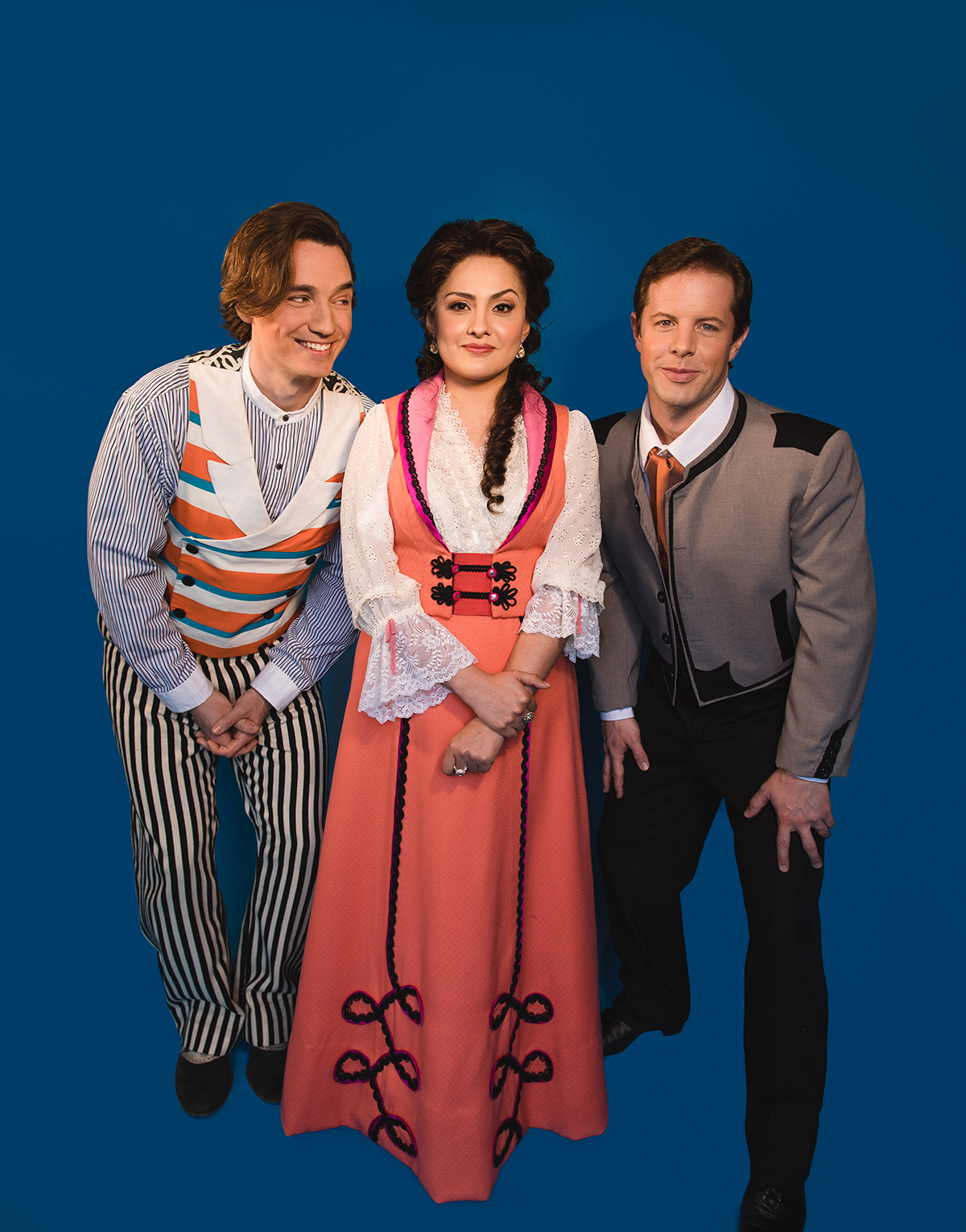Review: THE BARBER OF SEVILLE at Granada Theatre

On March 2, 2018, Opera Santa Barbara presented Gioachino Rossini's THE BARBER OF SEVILLE. Based on a libretto by Cesare and staged in a more modern manner by director Josh Shaw, the California performance of the early nineteenth century work was thoroughly amusing from overture to final bow. Shaw, the artistic director of Pacific Opera Project, updated the English titles and added a great deal of physical comedy, but kept the actual sung text totally in tact. Figaro, the Barber, was demonstrative, inventive and riotously funny, as was the easily tempted Don Basilio who kept pulling green handkerchiefs from his pockets. Rosina was coy, feminine, and determined to take charge of her own future. The false Lindoro was a rich swain who loved Rosina for her delightful qualities. Although Bartolo was the butt of most of the jokes, his innate humanity shone through. The latter is, perhaps, the hardest thing for director and performer to achieve.
The singing was simply gorgeous. There was not one weak link in this cast. Just after the curtain rose, Byron Mayes of the Opera Santa Barbara Chrisman Studio Artist Program sang Fiorillo's opening lines with a commanding sound. Lyric tenor Andrew Bidlack sang Almaviva with flexible tones and even decorated some of his lines. His "Ecco ridente in cielo" ("There is laughing in the sky") was a triumphant vocal showpiece and his character's multiple identity changes made this a fascinating portrayal to watch. Most outstanding was his substitute music teacher performed in drag as the well-endowed "Donna Alonsa." The audience shrieked with laughter when Bartolo tore "her" wig off.
The largest male voice on stage belonged to baritone Alexander Elliott, the Figaro. He sang his "Largo al Factotum" ("The Factotum's Largo") with whirlwind patter and skillfully colored phrases. His tones were as emotionally stirring as they were powerful. Elliott is an excellent comedian with the kind of instinctive timing that assures laughs throughout the hall. Cassandra Zoé Velasco was a charming Rosina whose singing was flexible. In "Una voce poco fa" ("A voice just now") her tones soared up and plunged down her wide, beautifully colored vocal range. Writers often remark that Mexico sends us wonderful tenors and baritones but rarely women singers. Velasco is a lovely mezzo-soprano exception who sings and acts with assured grace and exquisite style. Her decorated lines showed her command of this role. She sang her difficult "Lesson Scene" as gracefully as though it was a simple folk song.
Peter Strummer called his character Petrus Strummericus Bartolo and the characterization was distinctively his own. Onlookers knew they should hate him but they didn't because underneath the bluster he was a loveable curmudgeon. As the Officer who investigates the commotion reported by Bartolo's neighbors, Vincent Grana strutted like an overbearing cop and sang with a resonant bass-baritone sound. Perhaps we will get to hear more of him in the future.
Nathan Stark's deep-voiced, sonorous Don Basilio, on the other hand, had something Mephistophelian about him. He let everyone know he would sell his services to the highest bidder and he seemed to delight in changing sides. He cavorted around the stage with the lithe movements of a dancer as he sang about providing fake news in "La calunnia è un venticello" ("Calumny is a soft breeze").
Soprano Elle Valera, also from the Chrisman Program. was a chain-smoking, liquor-loving Berta. She was desperate to find a husband to support her habits, but running after Don Basilio got her nowhere. Even though she was puffing on a cigarette between phrases, her rendition of "Il vecchiotto cerca moglie" ("The old man looks for a wife") was a well-rounded Bel Canto aria. Perhaps Bartolo eventually turned to her after Rosina married Almaviva.
Scenic Designer Ken MacDonald created a whimsical off-white set with a rotating tower and balcony. Left bare, it was a street in Seville. The addition of creatively designed colorful furniture made it Bartolo's home. Helena Kuukka's lighting changed the setting from night to day and the weather from good to bad. Dana Osborne's brightly colored costumes were distinctively Spanish in style and fit the personality of each character.
Kostis Protopapas, the artistic and general director of Opera Santa Barbara, led the Opera Orchestra with the ever increasing tempi and dynamics Rossini designed to keep audiences on the edges of their seats for most of the evening. The overture was a little on the rough side, but for the rest of the opera the playing was generally smooth. Protopapas kept the music spiraling upward and the tension increased with every phrase. He also paid strict attention to the needs of his singers, particularly in their arias where he followed their changes in tempi. No wonder at the end of this performance the applause sounded like a second storm.
On April 20 and 21, 2018, Opera Santa Barbara's Chrisman Studio Artists will present Leonard Bernstein's TROUBLE IN TAHITI and Douglas Moore's GALLANTRY, A SOAP OPERA at the Center Stage Theater.
Photo by Zach Mendez for Opera Santa Barbara
Reader Reviews

Videos
